History of Tenerife by date for easy reference.
The history of Tenerife is about the biggest Canary Island where its natives were called Guanches. It was the last to be conquered for the crown of Castile of Spain, while it was most desired by pirates and corsairs. It is the only one which went with two airports into the new millennium. Dates will reveal why it is of strategic and economic importance between Africa, Europe, Asia and the new world in the West.
There is one fact which is often overlooked in the history of Tenerife.
1464, July 21, Don Diego de Herrero from Lanzarote and Fuerteventura who was husband of Inéz Peraza made a pact of peace called 'Paces de Bufadero' with the Guanche Mencey (king) of Azaña together with all other eight Guanche kings.
The Bufadero was by the South dock of Santa Cruz. This peace was to facilitate the bunking for foreign ships in order to fill their water tanks. The fort which stood near today's Plaza de Candelaria was built in 1471 and was abandoned by 1493, as the agreement didn't work in the end. The fort must have been a sore thorn in the eyes of the Guanches besides other issues.
Then the 'Reyes Catolicos'(Catholic kings) of Castile from the Spanish mainland needed a military take over of all Canary Islands for more power and Tenerife was the last in the list.
1477, October 15, The 'Reyes Catolicos' gave a military mandate to the commander Alonso Hernádez de Lugo to conquer Tenerife by military means. A papal 'bull'(order) supported the conquest for the sake of spreading Christianity. All this influenced the history of Tenerife and the fate of the Guanches.
1494, Castile's commander Alonso Hernádez de Lugo erected the Christian cross on a beach of Añazo by today's Santa Cruz in the Guanche Kingdom of Mencey Beneharo, who is shown above. This set the ball rolling for modern history of Tenerife.
Beneharo was a son of the last important Guanche king called Tinerfe who united all nine Guanche kingdoms. Beneharo together with Acaimo of Guimar became allies who joined De Lugo in battle against King Bencomo of Taoro who was the leader of all 'menceyes' at the time.
Who were the Guanches ?
- Former inhabitants of Tenerife which called themselves
the Guan (men, people) of Chinech and similar, contrary
to natives of other Canary Islands - The name Tenerife derives from La Palma calling it 'Tene (mount) ife (white)' after mount Teide which could be seen sometimes with snow.
- A people which most probably came from the Berber Atlas of North Africa
- A handsome race of tall build whose country was divided in nine kingdoms called menceyates.
- Read up more about Guanche cavemen culture their surprising customs, harmony with nature, social structure, festivals, gods, cults and more. All this information provides valuable details on the history of Tenerife.
Role of Guanche characteristics in the history of Tenerife?
A significant trait of the culture of motherland Spain is Flamenco music.Instead, the Tajinaste folk dance and today's Tenderete songs and music which were strongly influenced by the Guanches differentiate greatly from the serious and often sad style of the Flamenco.
Also, Tenerife's ancient cults of solstice celebrations, such as the bathing of the goats as well as harvest festivals are living on. Free food and wine is part of the festivals of Romerias, as they are called now. But, there are many more and none seem to have gone astray during more than 500 years of modern history.
They connect the past of a mysterious people who were living close to nature and knew how to enjoy life by sports and merry gatherings. This positive attitude helped the Tenerife people to cope with big problems. So did the Catholic religion which could be adapted well to ancient Guanche cults. In fact, the church and the Pope always had much influence in the history of Tenerife which still has a strong presence today.
By the way, Guanche DNA only survived in females within Tenerife's populations and relatively few words are left of the language of the so called Guan.
Possible scientifically proven Guanche facts
- The mummies of San Andres which are now at the museum 'Museo del hombre y de la naturaleza' have Cro Magnon characteristics, like the legendary people from Atlantis
- Mitrochondrial DNA research points to Berbers of the Atlas Mountains as well as Tuaregs of Northern Africa, as closest related to the Guanches.
- Guanche objects found in the burial cave 'Cueva Chacona' under a Guimar pyramid which were excavated 1997-1998 by USA and local scientists date back to between 680 and 1020 A.D. by the '14 method of carbon dating'.
- The earliest human Guanche settlement of the Canary Islands was carbon dated by the same method to 200 B.C.
Unsolved questions about the Guanche make the history of Tenerife most intriguing. Information from way back adds to the attraction.
Reports by historians and academics about Tenerife
- 90-168 A.D. The Fortunate Islands are taken for granted as prime Meridians in Ptolemy's 'Geographia'. This is not a map but a collection of notes. It could only be updated in Iberian circles, when it was possible to not only calculate longitudes but also latitudes thanks to Portugal's King Henry the Navigator.
- Pliny the elder contributes some important facts to history of Tenerife.
He reports King Juba's expedition at 40 B.C. when no inhabitants were discovered on Tenerife but, gigantic ruins, while prisoners of Northern Africa were left behind in the course of the expedition. - Phoenicians who were navigating around Africa between 1100 and 600 B.C. could have encountered Tenerife of the fortunate islands if they approached from the North with trade winds of Macaronesia and its ocean currents
- The expedition by Phoenicians for Pharao Nekau (Necho) in 600 B.C. to the 'Fortunte (Canary) Islands' was testified by Herodotus (4th book 'Melopomene')
The picture above shows a romantic version of the battle of Acentejo by a mural in a Santa Cruz park. It reads 'Batalla de Acentejo' on its top. Notice an almost peaceful landscape with Guanches and Spanish soldiers on foot.
The year was 1494 when the Castile Commander Alonso Francisco de Lugo of Spain lost the battle. This was not the end of the fighting. History of Tenerife had to be corrected by a different approach. Time played in favor of the Castile commander. He found his adversary rather diminished and feeble when he returned later on. In fact, the 'Guan of Chinech' caught a virus which had been brought in from mainland Spain. It caused havoc amongst them by obvious total lack of immunity.
The battles of Acentejo
- 1494 May, Acentejo Aguere La Matanza battle which Castile lost
- 1495 in early winter, followed by a third battle brought victory to
de Lugo's regiment and its native allies at La Victoria Acentejo
After the defeat of the Guanches in 1496
- The baptism of nine Guanche kings to become Christians and the following proclamation of peace of Los Realejos (La paz de los Realejos)on July 25, 1496
- 1498 Realejo Alto which had the first Cristian temple of the Island now known as Matriz Santiago Apóstol shows up as oldest Paroquia Church community of Tenerife in the important documents of the Catholic Visitas Sinodales.
- 1496, Guanches of undisclosed numbers were shipped to the Spanish court as slaves and or as victory trophies; there is the strong possibility that this served to pay off many debts.
On the other hand, even some Guanches and Canary natives received land
for military services rendered. This means that codes of ethics had their own logic during history of Tenerife. - 1496-1497, founding of the 'Cabildo de Tenerife' and of La Laguna as capital.
- 1496, land was given by De Lugo to a Genoese banker who starts to build Garachico.
- 1500, Tenerife became vulnerable to pirate attacks, while the slave trade was booming.
- 1643, the construction of the 'Castillo Negro' or black fort of Santa Cruz is completed,
while the fort of San Andres still stands as a ruin long after. Here should be mentioned that this monument as well as the hazardous sea front of its little town has been an ongoing issue during history of Tenerife right up to 2013. Meantime, the black fort has not only become an icon but also a much loved topic of many a tale of history of Tenerife.
Click this link Tenerife black fort Castillo Negro to see a larger photo of it.
Growing under pirate attacks
1554, Durand De Villegaignog failed a pirate attack at Santa Cruz. His landing on shore was repelled by brave Chicharreros, (nick name of Santa Cruzeros) many of which assisted soldiers by throwing stones and objects.
Another sign of influence of the Catholic Pope in the history of Tenerife
1559, Pope Clement declares the Tenerife Black Madonna or ‘ Black Virgin of Candelaria’ patron of all Canary Islands.1586 Sir Francis Drake attempts to conquer the port Santa Cruz of the Tenerife capital San Cristobal de la Laguna
1657, Sea Admiral Robert Blake wiped out 'the Spanish Silver Fleet' with his 13 Roayal Navy vessels by Santa Cruz of Tenerife while only losing one ship in the battle. The vessels of this fleet were some of many which bunked regularly in the port of La Laguna. The Silver fleet was known to bunker at Santa Cruz by with treasures from South America and from Asia. However, Robert Blake had to abandon his takeover of Santa Cruz and that was a victory for Spain and history of Tenerife.
Not only Shakespeare but also many British royals raved about a certain Tenerife wine
The history of Tenerife has many stories about the renown Malvasia wine which was sweet but strong.Viniculture was taken on right after 1496. It was sensational when Puerto de la Cruz of Orotava exported 12,5 million liters of Malmsey Malvasia wine within a single year sometime between 1706 and 1778.
1706, May, 05, Mount Trevejo erupted and destroyed Tenerife's port Garachico. This was one of most important days in the history of Tenerife, as it hit this rich town so unexpectedly. The harbor Puerto de la Cruz of La Orotava took over Garachico's import and export and thrived well accordingly. Garachico Tenerife and the real damage in May 1706
What happened to La Laguna harbor just after Jennings?
- 1706, Nov.05 The pirate John Jennings was defeated in Santa Cruz
- 1723 Santa Cruz, which officially had been only La Laguna's fishing port for 227 years, became Tenerife capital
- From 1723 onward, the wealthy Santa Cruz was created adjacent to its harbor under the military commander Comandante General Lorenzo de Villavicencio. This part of town concentrated around the Castillo de San Juan.
- The Castillo is one of few monuments which disappeared from the history of Tenerife, except for an underground wall that can be reached on Plaza de España
1727, January 09, The Corsair Pirate and businessman Amaro Pargo who later retired in Candelaria is declared aristocrat by mainland Spain in the time of King Felipe V. By the way, some of his legendary bounty may have gone to the town's famous Cathedral as catholic proof of his repenting; indeed, he used to mentioned that he could see his hidden treasures from his house, which were unlikely to have been dumped in the ocean.
How did La Laguna fare after its Cabildo (government) moved on?
La Laguna remained the home for thinkers and artists with many so called Tertulias, before it opened the first Canary Islands' university, later on.Realejos earned international recognition in academic circles in Paris France, Great Britain and Germany because of its son the historian José Viera y Clavijo (1731-1813) who made all the Canary Islands proud of him. He too, wrote most of his work on the history of Tenerife in La Laguna.
1776 The French mathematician and astronomer Jean Charles Borda measures Mount Teide with with the result of 1905 toises which equals 3712,845meters
What did sugar cane have to do with slave trade?
End of XV, XVI and XVII centuries, sugar cane plantations brought fortune to many in Tenerife. However, the sad part is that Tenerife and other slave traders undermined the island's sugar industry right from the start. Of course, the selling of cheap manpower for cheap labor to the new world had to have repercussions. The colonies which eagerly paid for slaves could afford to produce and sell sugar at much lower prices, very quickly. A classic case of two sides of a coin during history of Tenerife.
Tenerife immigration to surprising locations
In 1731 many from Tenerife and neighboring islands settled in Southern Texas, where they founded San Antonio known as the Alamo.the first Santa Cruz de Tenerife printing press for media was established.
1756 Malvasie Malmsey from Tenerife had a hard time to compete with the bottled sweet Port wine in the course of the 18th century. The Spanish War of Succession was to blame partly. As a result of it, some Scots started to make port in Northern Portugal but, didn't get on well.
The situation only improved when the Marques de Pombal founded the old wine company in 1756 in Portugal and protected its Douro Valley industry by law. He even had Elderberry trees uprooted to prevent cheating with berries at wine production.
1763 Canary Island families emigrated to the Mississippi Delta and became settlers of Louisiana.
Watch the following video documentary. It's all about emigration where people from Tenerife are likely to have played a part.
1768, the Candelaria obelisk called 'Triunfo de Candelaria' in the Tenerife capital was built. Learn more about the black Madonna and patron of all Canary Islands which it represents by scrolling down this page.
1771 Nicola Blanco (White) the Irish businessman becomes first Mayor of Puerto de la Cruz.
What about fair play for harbor business all over Spain ?
1778 The wine export crisis peaked and trade with South America was not as good as expected, as mainland Spain had monopolistic advantages in various fields, at that time. From 1786 onward, Tenerife ships was allowed to load 25% cargo in foreign goods but, this concession wasn't good enough for the economy.
Gunpowder needed for more than enemies
- 1784, La Casa de Polvora (gun powder storehouse) was constructed. Later in 1997, the Calatrava oratorium was erected in its vicinity.
- 1787, the first proper Santa Cruz dock (Muelle) was applauded by all. History of Tenerife is to show how important all improvements to the port of the capital were going to be.
- 1792, Jardin Botánico (Jardin de Aclimatisación de la Orotava) sowed its first plants, as second Botanical park of Spain after Madrid and became famous thanks to a German botanist called Herman Wildpret.
Admiral Nelson a top topic in history of Tenerife
1797, July 25, The people of Santa Cruz besides the black as well as the San Andres forts played an important role in the defeat of AdmiralHoratio Nelson.
A legendary dragon tree which made more history of Tenerife than Icod's Drago Milenario
In 1799, Alexander von Humboldt the famous biologist left the world a drawing of the most legendary dragon tree of Tenerife the Dracaena Draco of La Orotava. It perished 100 years later. History of Tenerife by word of mouth affirmed that this Draco had stood the test of times for 6000 years.The so called 1000 year old dragon tree 'Drago Milenario' of Icod de los Vinos still stands. You find this tree which belongs to the onion family in almost all books of history of Tenerife.
Herr von Humboldt passed by during the era of enlightenment, when many so called Tertulias (similar to seminars) were organized. Many reforms often followed the Tertulia gatherings.
1803 Rey Carlos IV (king Charles IV) declared Santa Cruz de Tenerife which was also called Santa Cruz de Santiago de Tenerife town 'exenta' (ams). It was granted its first coat of arms and its own town hall. This was mainly due to its bravery and skills shown by the defeat of Admiral Nelso, 4 years earlier.
Santa Cruz Tenerife port closure
1818, All the ports of the Canary Islands were closed by law after the abolition of the absolutist government of king Fernando VII.This was one of hardest hits during history of Tenerife. After all, it played a very important role in the development of the new colonies.
Santa Cruz de Tenerife capital of all Canary Islands
In 1821, S/C de Tenerife became capital of all Canary Islands by royal decree of King Ferdinand VII of Spain.A long period of shifting offices and construction of new historic buildings as well as landmarks and monuments followed.
However, the history of Tenerife will soon show that this wasn't the very best solution, as Las Palmas was a worthy competitor.
1825 - 1870, introduction of the cochineal insects (dactykopius coccus) for natural purple dye productions
1837, the port of Santa Cruz de Tenerife was reinstated with an exemption of first class, while all other harbors of the Canary Islands were allowed to operate again, as well. Last not least, the history of Tenerife started to look better again.
1840, Las Palmas and Santa Cruz de Tenerife started to share leading government seats by taking turns.
The wonder bug of history of Tenerife
1848 to 1950, export boomed thanks to Cochineal which loves to invade the prickly pear cactus..
Did visitors of colonies take a break at Santa Cruz Tenerife?
1850 a record year in history of Tenerife for Santa Cruz harbor by the amount of British, Dutch, Belgium. French and other ships which stopped over on their way to their colonies in Africa.
What does 'Puerto Franco' entail?
1852, on July 18th, Santa Cruz de Tenerife harbor became free port puerto franco by royal decree (puerto franco). It was meant to correct economic problems, as only mainland Spain had rights to re-export foreign goods before that time. This proper trade law was implemented after a special custom system had been introduced in 1823 which became a laughing stock in 1844. This progress of free trade was achieved after decades of heated debates for better port custom tariffs (airfreight didn't exist) and economic liberalizations. The main force behind this were descendants of liberal British and Irish immigrants, other liberal academics of the island. Much credit must also be given to Don León y Castillo who was a government minister in Las Palmas at that time.1855, May 01 La Ley (the law) de Desamortizaciones under Rey Carlos III of Spain. This means the end of feudalism in Tenerife, as Mayorazgos may now be subdivided and/ or sold to private people. Before, only ownership by inheritance of the first born was the norm.
1860,British companies started to deal in quality coal for steam boats in the port of Santa Cruz de Tenerife as well as of Las Palmas. Later some other nationalities joined. Soon, Gran Canaria was leading, though. The business only really became interesting for all vessels, such as with destination Capetown and beyond in the East and all over South America when only the storage tax of 2 % remained. The sale of coal was strictly in the hand of a few companies.
Mind that a big ocean liner, such as the 269,06m long Titanic needed 800 tons of coal per day.
Eventually, steam boats stopped operating later in the XXI century.
1862 Cochineal price and production were decreasing due to a London exhibition of chemical dies
1868 Alvarez Rixo the late Mayor of Puerto de la Cruz took note that 14 types of Andean potatoes were successfully cultivated in Tenerife at that time. Learn about the potato history which concerns more than Tenerife and which goes back to the middle of the XVI century.
The never ending economic drama during history of Tenerife
1870, islanders started fleeing to the new world, above all Cuba after the international devaluation of the Cochineal.
Health tourism
1888, May,25 the Sanatorium and Hotel Taoro was founded in the light of high European demand for health tourism to La Orotava. It had become Casino in 1979 which lasted until 2007. Famous visitors were Hemingway, Agatha Christie, Charles Edwards, Thomas Nichols, George Glass, Olivia Stone, European kings and queens, politicians and also Freemasons.1904, Dec.05, inauguration of the Victorian style Hotel Quisisana by British demand. Initially built by a Russian Jew with British passport who became one of first tomato exporters to Brtitain. This is just one example of high influence of British commerce and culture in Tenerife of that era. Eventually, this hotel became a popular secondary school which lasted until now.
Work for many in the capital of Tenerife
1907, A junta de obra (work committee) had been founded for a gigantic harbor project of building new docks, breakwaters and other port facilities just in time before the 1913 marine blockades started.100 years Tenerife aviation June 25, 2013 - 2013 A monoplane Bleriot XI replica was on exhibition on the Tenerife South airport in memory of its first flight for Tenerife history by the French pilot Leonce Garnier who had built it. The aircraft started its maiden voyage on a terrain by a mill near the Guimera motorway of Tenerife East. This was also near Mount Ofra.
1924, a German Henschel locomotive which still exists helped to run a small train to transport bulk building material for a distance of up to 13km, while four harbor partitions were planned. The installations were only improved in 1955. The north as well as south Muelle (docks) were priorities.
Two provinces and their Canary Islands
1927, the Canary Islands were divided up into two provinces with Tenerife and Gran Canaria as leaders by taking turns. The islands of La Palma, La Gomera and El Hierro were declared provincial parts of Tenerife which still stands today. This happened under the dictatorship of the military leader Miguel Primo de la Rivera. This was not the end of military governments in the history of Tenerife. More radical years were still to come.
The Franco era of history of Tenerife
1936, Francisco Franco was the youngest European General of 1926 after excelling in the Moroccan Rif war. He was transferred to Santa Cruz de Tenerife, where he was supposed to have less political influence. However in Tenerife, Franco and leading military friends plotted the takeover of the Spanish government during a secret trip to a camp in the pine forests of the Anaga mountains.. Franco put his coup into action from Morocco. Germany and Italy assisted in this. 22 German bomber planes and German and Italian pilots shifted many of Franco's soldiers to Seville who then helped regain marine support. He succeeded thanks to shrewd tactics and his high standing within his army of Africa.. He was more than respected by the Spanish troops as well as with native soldiers in Spain's Moroccan protectorate. Yet, Franco's coup was only a partial success. The Spanish Civil War which followed was a crime against humanity. The episode of the history of Tenerife under Franco was almost humanly acceptable compared to what happened on mainland Spain, though.
Why was Tenerife isolated?
1936 until 1939, the Spanish civil war isolated Tenerife very much. The economy was bad already due to blockades from the first world war from 1914-1918 and then again by the 2nd world war. Economic downturn continues in 1939 after the end of the Spanish Civil War until the mid 1950s. Freemasons who were good business people and others who didn't fit Franco's nationalist ideas disappeared.Tenerife's famous carnival was suppressed by El Generalisimo and only had a full comeback after 40 years in 1976.
Extremely interesting in this context is an old photo by the famous photographer the late Don Juan G.Dumas which depicts ladies, as way back as the 1920 Carnival Los Realejos.
1950 Economic hardship peaks and 16000 Canary immigrants went for greener pastures. The sad headlines of the century XX of Tenerife emigration wouldn't stop. More than 5000 in the overloaded boats never made it to the American shores, where Venezuela was most desired after its oil discovery.
Spain's international isolation ended which helped Tenerife
1955, Spain joined the UN1953, economic and military pact between Franco and US President Eisenhower.
1959 -1974 Spain became an economic miracle, as its industries were revived through radical measures,
Relief, as new doors opened
1960, Venezuela closed its borders but, mass tourism provided work in Tenerife. Many returned to the island. General Franco saw its importance first and became a major force.1872, final end of Malvasia wine export, More bananas are planted for export. 1975, biggest airport disaster at Los Rodeos. The Tenerife drama happened when two deviated Jumbo jets collided in the mist. 583 passengers were killed. Nevertheless, many Venezuelan immiggrants were not scared to return by air travel when Tenerife tourism took off after the death of General Franco. Also, a second airport called Reina Sofia was built in the south, as fog wasn't an issue there.
1976, tourism by air was rising. Eventually, cheap frequent charter flights were the main reason why more hotels and resorts were constructed. The holiday home in Tenerife attracted many foreigners who invested on the island.
1980,January 18 Tenerife Carnival is declared of high international tourist interest
1982, autonomous Canarias became reality. This means that all the Canary Islands were autonomous regions of Spain from there on.
1986, Spain joined the European Union and all its provinces enjoyed help from Brussels from then on.
When vessels the size of Titanic started coming to Tenerife
- 1994, any a modern cruise liner comes to Muelle Sur. So did the Queen Elizabeth II and the Queen Marie II until the latter stopped operating. Ferries can still be seen in 2013 by Plaza de España. (Muelle Ribera. The Queen Mary II was 1.019ft long which was about 120ft more than the Titanic which never came to Tenerife.
At the same time of the 21 century, containerization implied much reconstruction of the Santa Cruz harbor which included its location by the Bufadero. - 2011 So far the container facility is 11000 TEUS in the port of the Tenerife capital, but this will be augmented substantially in the near future.
- 2012, 16 luxury cruise ships stopped over in Tenerife.
- 2013, June, Shengzen of the Republic of China became a sister port of Santa Cruz de Tenerife and special agreements of collaborating are in place.
- A 6 million € shipyard bigger than that of ASTICAN of Las Palmas of Gran Canaria to be built on the east Muelle between June 2016 and June 2017. The repairs of oil rigs and extra large vessels will employ at least 700 people.
All sorts of historic and historically important data from the end of century XX onward
- By 1995, Playa de las Americas kick started the Tenerife South tourist boom, while world class golf courses spring up in many places. That's when most expats returned home to Tenerife from the new world.
- 1999, San Christóbal de la Laguna was declared World Heritage by UNESCO for being a unique example of colonial town without surrounding city walls.
- 2002, Jan.01, The Euro was introduced in Tenerife, as it is part of Spain.
- 2003, Sept, 26 The Santa Cruz Auditorium Opera house was inaugurated and drew international acclaim from then onwards, while other landmarks appeared in the Tenerife capital
- 2005, Tenerife started to experiment with 50 000 olive trees. 20 000 were planted in the region of Arico whose arid climate is no good for much else. By 2012, 10 000 kg of olives were harvested on the island
- June 28, 2007 Teide National Park was declared World Heritage by UNESCO
- 2008, 150 000 tons left Tenerife for overseas. Banana plantations sprung up in the north of the island when sugar cane lost interest. People in Hamburg harbor were crazy about the small fruit from the biggest of all Canary Islands. Of course, other isles competed as well.
- 2008/2009, the building boom bubble burst all over Spain. Unemployment started in all provinces. By 2013, only 888680 inhabitants were registered in Tenerife, contrary to 950.000 in 2011, as many had left to find work elsewhere.
This is an occurrence which keeps on repeating itself during modern history of Tenerife.
- By 2013, most of the 'platanos' (bananas) are grown in South Tenerife in huge, white tents which allow air circulation. There is also tomato and flower cultivation under such shade cloth.
- March, 2013, Granadilla's construction for the island's bulk shipping harbor got its final go ahead despite protests of many ecologist organizations and other critics.
- 2015,
A king of Spain had never stepped down from his thrown by his own wish before.
In fact, this abdication had to be legislated by Spain's constitution.
2014, June 19: Following was a low key ceremony on the next day of the proclamation of his son as the new Monarch King Felipe VI of Spain.
Hence also Tenerife has a new king, as it is a province of Spain.
History of Tenerife Modernismo architecture and more.
2017 Revamp of The Vintage bar 1920 together with the historic Cafe Farina Orotava give a glimpse into Modernismo architectural style of the late XIX and the early XX centuries as well as into infrastructure of La Orotava of that era.
Four most historical fincas of traditional architecture in Tenerife
- Hacienda de los Principes
- La Gorvorana
- Best example of feudal history of biggest Canary Island by Casona del Patio
- La Quinta Roja with a tragic Tenerife past
These four country estates all have main buildings whose original architectural appearance on the outside has hardly changed, while La Gorvorana is a ruin which hopefully will be restored in the future.
2017 June Inauguration of Casa del Carnaval with carnival being an important asset of the city's economy. Its permanent museum section with its historical Fiestas del Invierno is a must see.
Also June 2017 Now Plaza de Espana the main Santa Cruz town square has direct ocean access for everybody to its yacht harbor, to a new cruiser terminal and more...
More links related to the island's past
A legends in the context of the Garachico tragedy of 1706 as well as history Tenerife of the King of TaoroTenerife History Los Gigantes is rather significant for tourism by the era which started with General Franco's coming to power after the Santa Cruz military plot of 1936.
Tenerife history Puerto de la Cruz where British but above all Irish immigrants excel
Read up here where Guanche rebels Los Azados are mentioned.
Spain history contribution by Los Realejos in 1496.
Capital of Tenerife with links to historical events, places or monuments
>From history of Tenerife back to home.
History Tenerife and its culture in South America
Colonial experts were trained in a big building on Plaza Weyler of Santa Cruz de Tenerife to work as administrators for Spain in Venezuela, Peru, Bolivia, Guatemala, Mexico, Chile, Argentina, Ecuador and on many Spanish island colonies, such as Cuba.An example is the culture of Peru with its history, art, cuisine, and attractions such as its architecture and carnivals - where the black Madonna Virgin de Candelaria Lima is just one of many very important links with Tenerife.
From history of Tenerife back to Home
Declaration and Disclaimer
Please note that there are hundreds of testimonies about De Lugo's battles and often even about the Guanches. Everything is based on hearsay, as much was written down much later. Some information was most probably biased. This part of history of Tenerife is accordingly contradictory in the Internet which you will find true, the more you research. Much of the knowledge of the Tenerife holiday home insider comes from a history book which was written by Spanish university graduates who were reluctant to give exact dates for many Tenerife events. Both were born in the Canary Islands and graduated at the University of La Laguna. Both received high degrees of merit for exceptional academic work done.
Credit is given
- Dr.José Manuel Castellano Gil who was born in Gran Canaria in 1960.
- Francisco Javier Macías Martín who was born in La Palma in 1960
Research for later dates was also not taken lightly by the webmaster of this article. It was also counter checked by reasonable means many times by searching, comparing, evaluating or verifying history data by other webmasters online. This work was done by studying publications in German, English and in Spanish, as they often vary.
However, little is cast in stone in regard to any past, such as the history of Tenerife. Everything may still be corrected over time.
Please, do not spam the comment box with advertisement, selfish publicity and anything that isn't related to history or to this article.

Please mind that the comment box below is meant to help others. In case you have a question or want to tell me something, kindly use this contact form.
This site is protected by Copyscape
Transfer wanted
in Europe?

Optica Columbus Best optician Tenerife North Important eye tests Call 922 387072
Insider

Note:
Text and images within this site are not to be copied or traded at any time. This regards online and offline.
Please respect my copyright
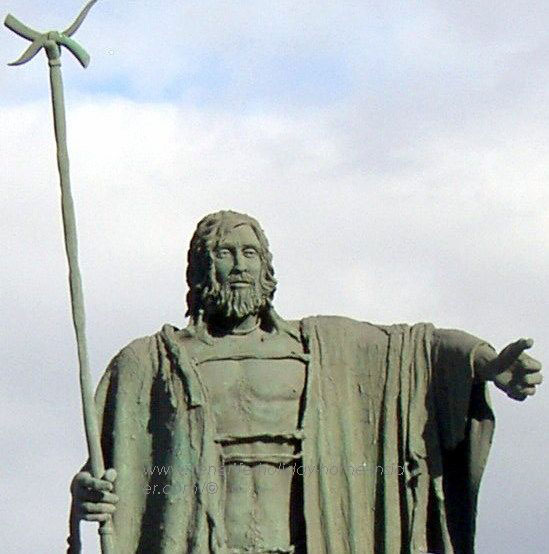
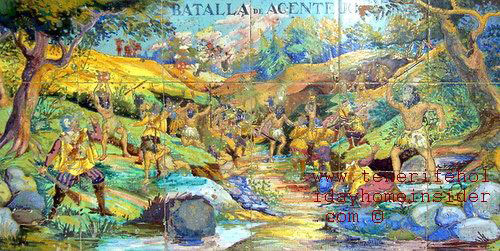
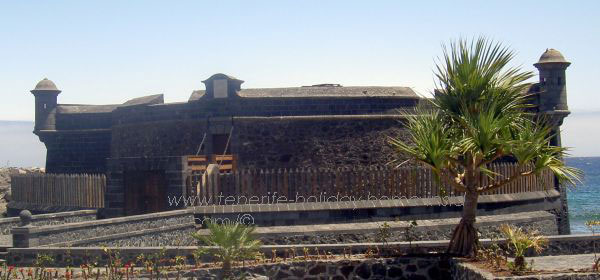
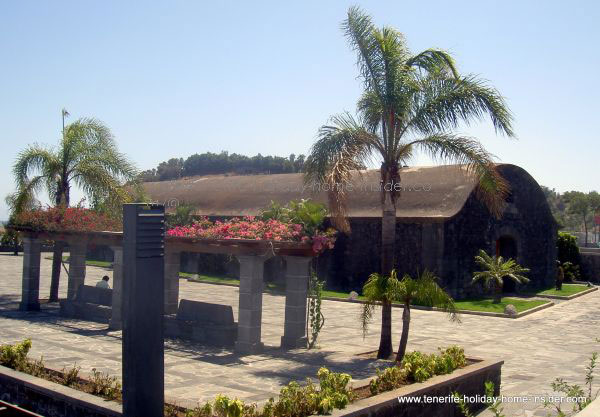
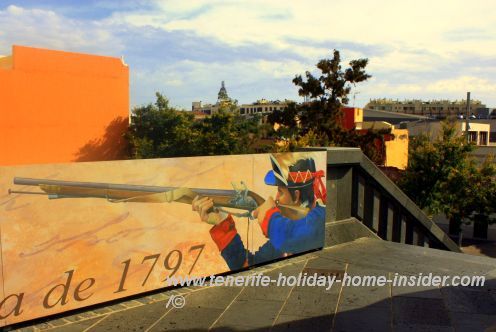
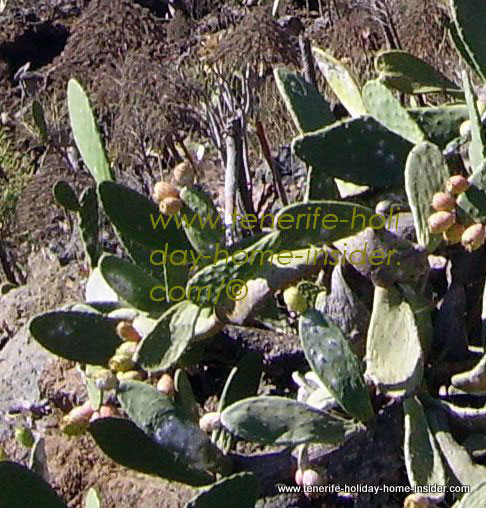
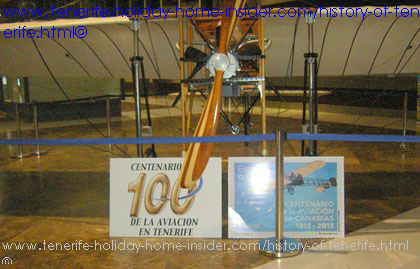
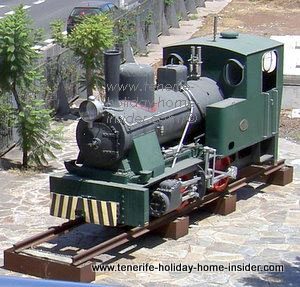
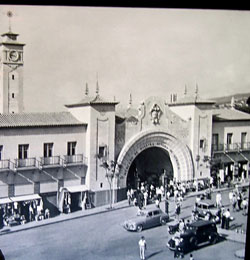
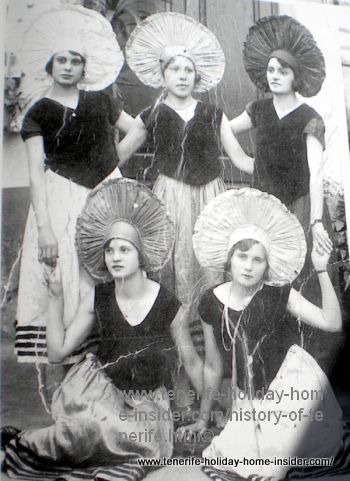
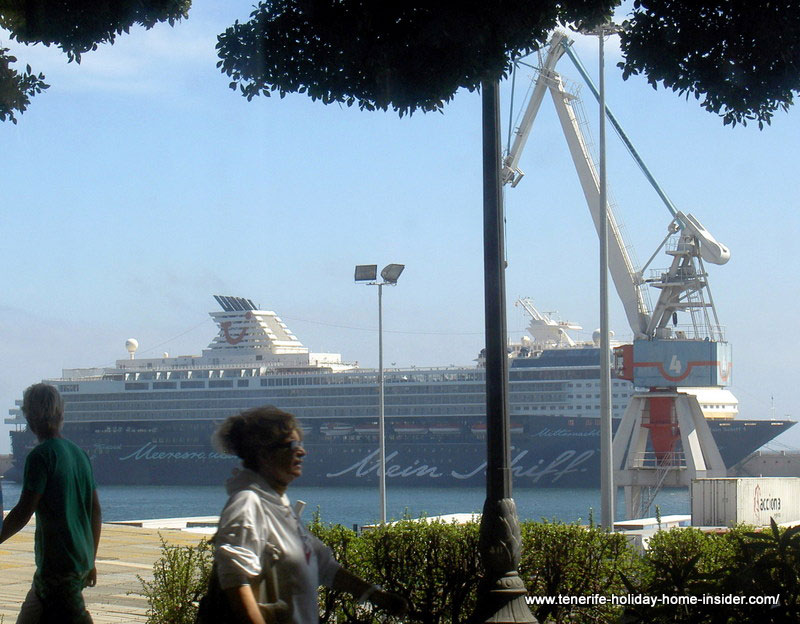
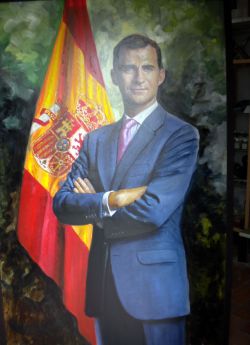
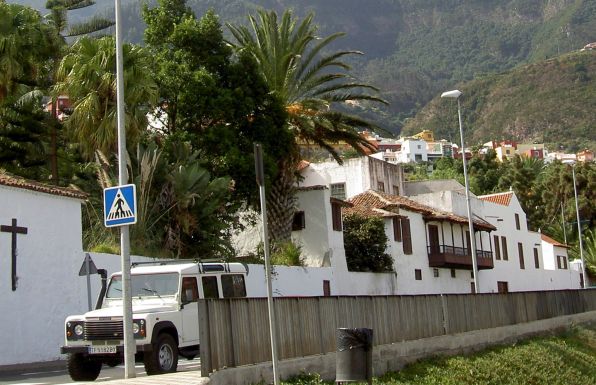
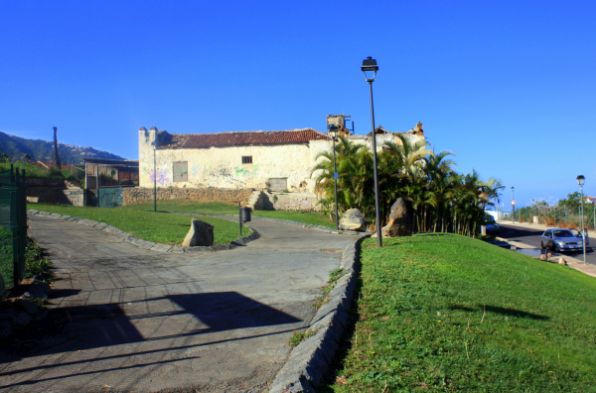
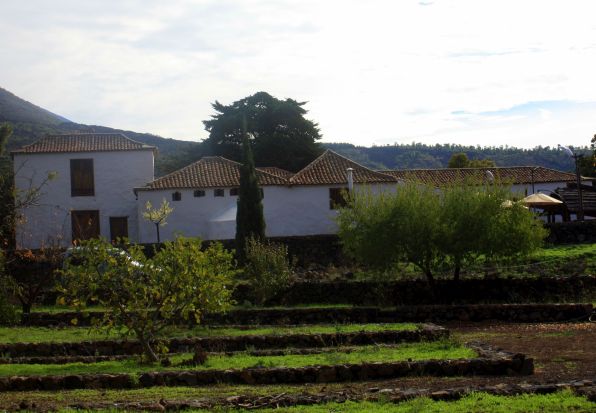
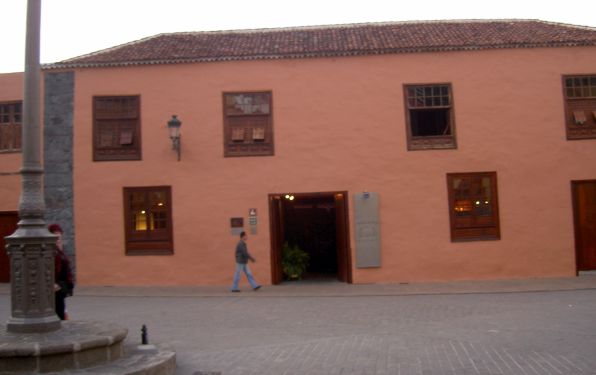



New! Comments
Have your say about what you just read! Leave me a new comment in the box below.